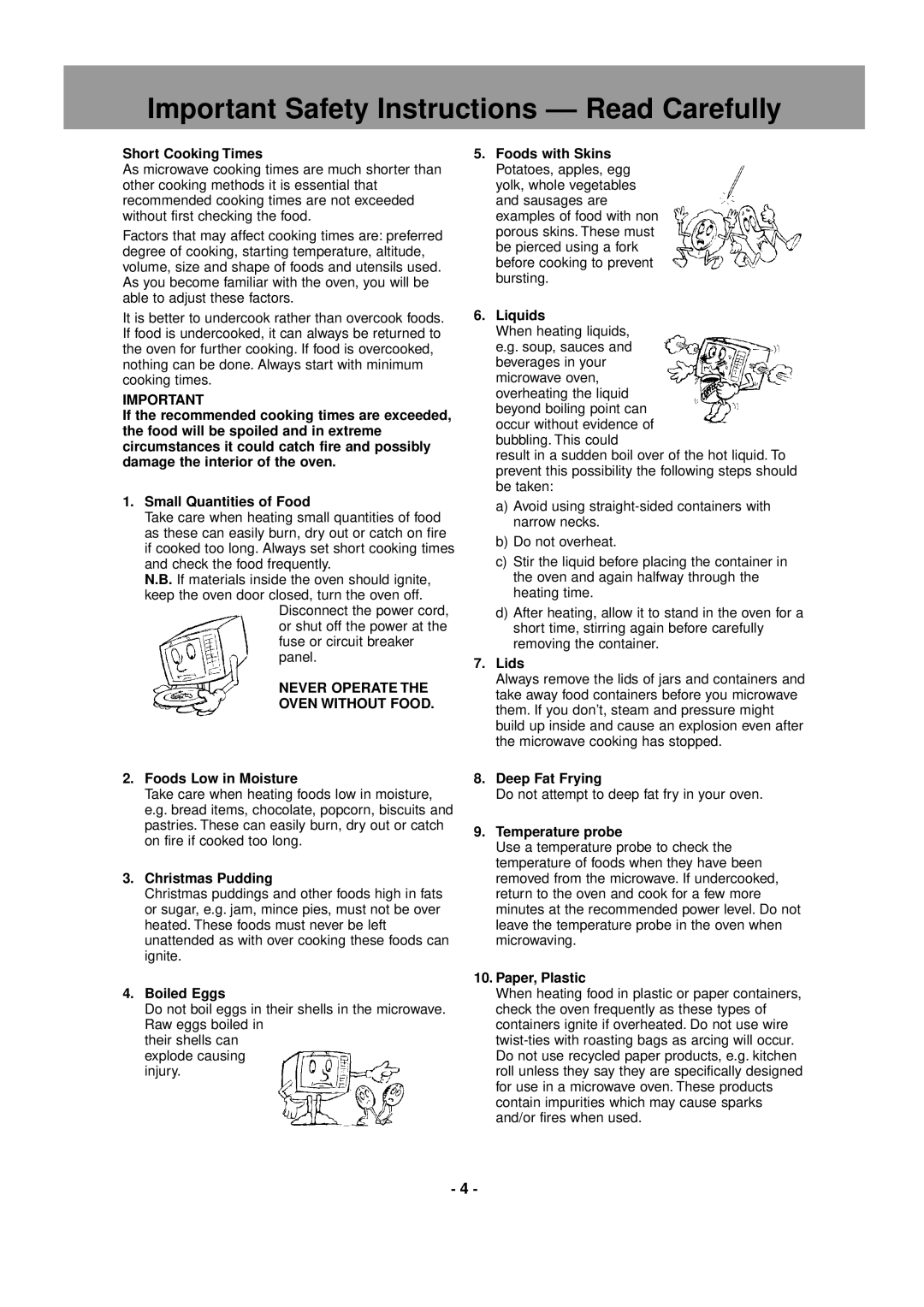
Important Safety Instructions –– Read Carefully
Short Cooking Times
As microwave cooking times are much shorter than other cooking methods it is essential that recommended cooking times are not exceeded without first checking the food.
Factors that may affect cooking times are: preferred degree of cooking, starting temperature, altitude, volume, size and shape of foods and utensils used. As you become familiar with the oven, you will be able to adjust these factors.
It is better to undercook rather than overcook foods. If food is undercooked, it can always be returned to the oven for further cooking. If food is overcooked, nothing can be done. Always start with minimum cooking times.
IMPORTANT
If the recommended cooking times are exceeded, the food will be spoiled and in extreme circumstances it could catch fire and possibly damage the interior of the oven.
1.Small Quantities of Food
Take care when heating small quantities of food as these can easily burn, dry out or catch on fire
if cooked too long. Always set short cooking times and check the food frequently.
N.B. If materials inside the oven should ignite, keep the oven door closed, turn the oven off.
Disconnect the power cord, or shut off the power at the fuse or circuit breaker panel.
NEVER OPERATE THE
OVEN WITHOUT FOOD.
5.Foods with Skins Potatoes, apples, egg yolk, whole vegetables and sausages are examples of food with non porous skins. These must be pierced using a fork before cooking to prevent bursting.
6.Liquids
When heating liquids, e.g. soup, sauces and beverages in your microwave oven, overheating the liquid beyond boiling point can occur without evidence of bubbling. This could
result in a sudden boil over of the hot liquid. To prevent this possibility the following steps should be taken:
a)Avoid using
b)Do not overheat.
c)Stir the liquid before placing the container in the oven and again halfway through the heating time.
d)After heating, allow it to stand in the oven for a short time, stirring again before carefully removing the container.
7.Lids
Always remove the lids of jars and containers and take away food containers before you microwave them. If you don’t, steam and pressure might build up inside and cause an explosion even after the microwave cooking has stopped.
2.Foods Low in Moisture
Take care when heating foods low in moisture, e.g. bread items, chocolate, popcorn, biscuits and pastries. These can easily burn, dry out or catch on fire if cooked too long.
3.Christmas Pudding
Christmas puddings and other foods high in fats or sugar, e.g. jam, mince pies, must not be over heated. These foods must never be left unattended as with over cooking these foods can ignite.
4.Boiled Eggs
Do not boil eggs in their shells in the microwave. Raw eggs boiled in
their shells can explode causing injury.
8.Deep Fat Frying
Do not attempt to deep fat fry in your oven.
9.Temperature probe
Use a temperature probe to check the temperature of foods when they have been removed from the microwave. If undercooked, return to the oven and cook for a few more minutes at the recommended power level. Do not leave the temperature probe in the oven when microwaving.
10.Paper, Plastic
When heating food in plastic or paper containers, check the oven frequently as these types of containers ignite if overheated. Do not use wire
- 4 -
